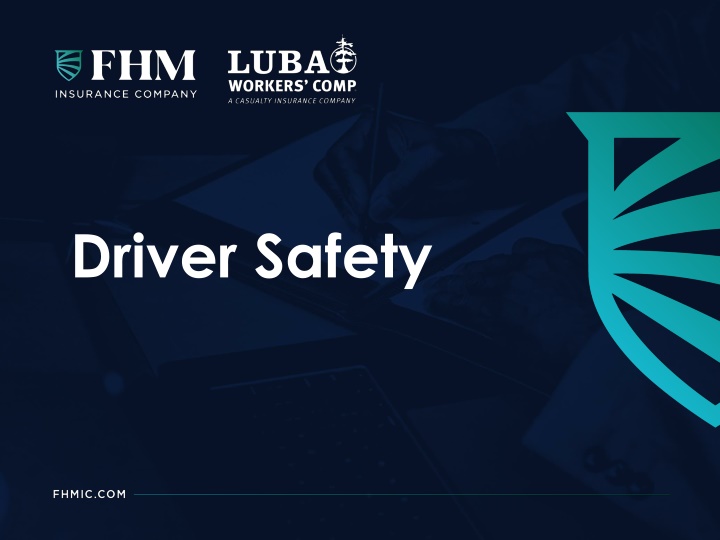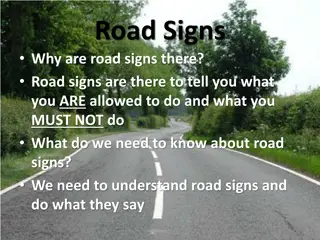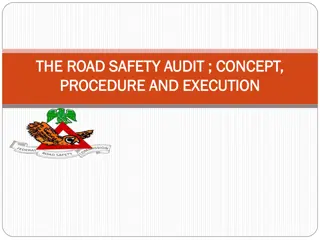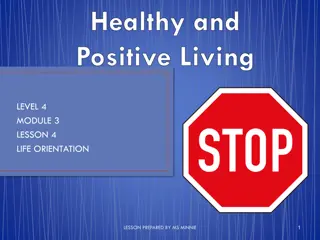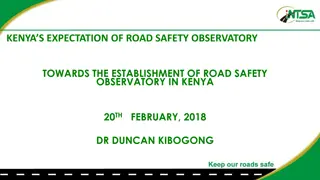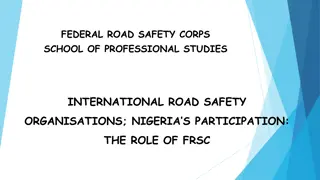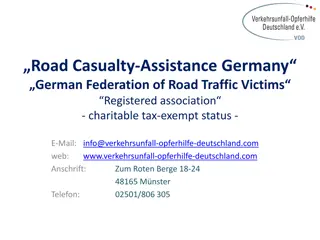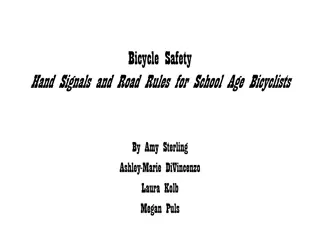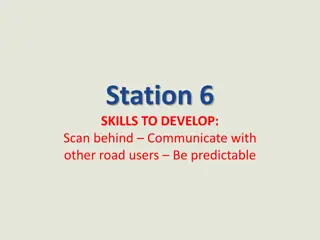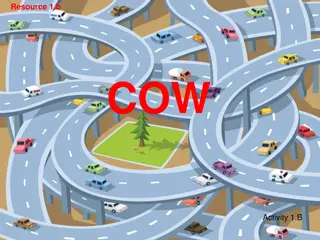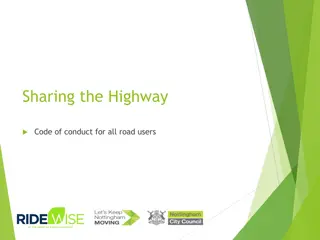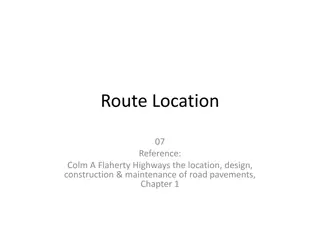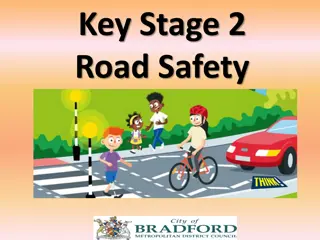Road Safety Awareness: Facts and Tips to Stay Safe Behind the Wheel
Explore the importance of driver safety, driving injuries, unsafe acts on the road, and the dangers of driving under the influence. Discover crucial statistics on road safety in the U.S. and learn how to prevent accidents through responsible driving practices.
Download Presentation

Please find below an Image/Link to download the presentation.
The content on the website is provided AS IS for your information and personal use only. It may not be sold, licensed, or shared on other websites without obtaining consent from the author.If you encounter any issues during the download, it is possible that the publisher has removed the file from their server.
You are allowed to download the files provided on this website for personal or commercial use, subject to the condition that they are used lawfully. All files are the property of their respective owners.
The content on the website is provided AS IS for your information and personal use only. It may not be sold, licensed, or shared on other websites without obtaining consent from the author.
E N D
Presentation Transcript
Driving Safety How safe are our roads? Driving injuries-on or off the job Unsafe acts behind the wheel Driving under the influence Road rage Unsafe conditions Vehicle safety features Did you know?
How Safe Are Our Roads? 2019 data for the U.S. More than 38,000 people die every year in crashes on U.S. Despite the events of 2020 and the response to the Coronavirus pandemic, initial reports have indicated that motor vehicle fatalities increased in the United States in 2020 over 2019. On average in 2019, fatal car crashes were more frequent on weekends, peaking on Saturday. The number of nonfatal crashes tended to be higher on weekdays, peaking on Friday. Mississippi is the state with the highest fatality rate 23.1
Driving Injuries On/Off the Job The most hazardous environment Driving story: A manager was beginning a business trip and was driving from his house to the airport on the freeway. He was shaving and looking into the rearview mirror, saw (in peripheral vision) something cut in front of him. He reacted by steering to the right, driving off the freeway and hitting a tree Result was a broken hip For most of us, whether on or off the job, it is on the road We face it daily
Unsafe Acts Behind the Wheel Shaving Driving under the influence Putting on make-up Driving at an unsafe speed Failing to stop or yield Others? Not using a seatbelt Reading a map Reaching behind you to spank kids Unsafe passing of another vehicle Not using blinkers Tailgating
Driving Under The Influence (DUI) Every day, about 28 people in the United States die in drunk- driving crashes that's one person every 52 minutes. Sobering facts: About 2 in every 5 Americans will be involved in an alcohol-related traffic accident at some time in their lives Remember the one-one rule: one drink per hour (Your body takes about an hour to rid itself of each 1/2 ounce of alcohol) Progress in this arena: A social stigma has been building against drinking & driving Many social drinkers are being more responsible
Road Rage Road rage is driving under the influence of too much anger Provoked by: Feeling endangered by someone else s driving (another driver cuts you off or tailgates you) Resentment at being forced to slow down Righteous indignation at someone who breaks traffic rules Anger at someone taking out their road rage on you Therapy for road rage: Take a deep breath and just let it go!
Unsafe Conditions Improper vehicle maintenance Inadequate brakes Worn tread on tires Hoses, belts, windshield wipers Inadequate acceleration Headlight(s) out Poor visibility Nighttime driving (Fatality rates/mile are 4 times higher at night) Dust storms Rainstorms Poor road conditions Slippery surfaces from weather Road not properly maintained
Vehicle Safety Features Child safety seats Note: Children in child seats should not be placed in the front seat of cars Anti-lock brakes Safety cages built into the vehicle framework If buying a new car, ask about side-impact collision data. Other? Daytime running lights Headlights that are on whenever vehicle is running Lap/shoulder safety belts Reduce risk of moderate-to-fatal injuries by approximately 50%. Air bags for driver & passenger Combined with lap/shoulder belts, they reduce risk of fatality by another 10%. Side impact airbags Ability to disengage airbags
Did You Know? When driving on a road that is new to you: Your eyes tend to scan the road from left to right which is an excellent driving habit. We tend not to scan when in familiar territory. How closely can you safely follow another car? We tend to follow based on how much of the road we can see. A long hood causes us to follow at a greater distance (since you must look over the hood to see the street). Drivers with shorter hoods tend to follow more closely. Use the 2 or 4 second rule. Good driving conditions, keep a 2 second distance behind. Poor driving conditions, keep a 4 second distance behind.
